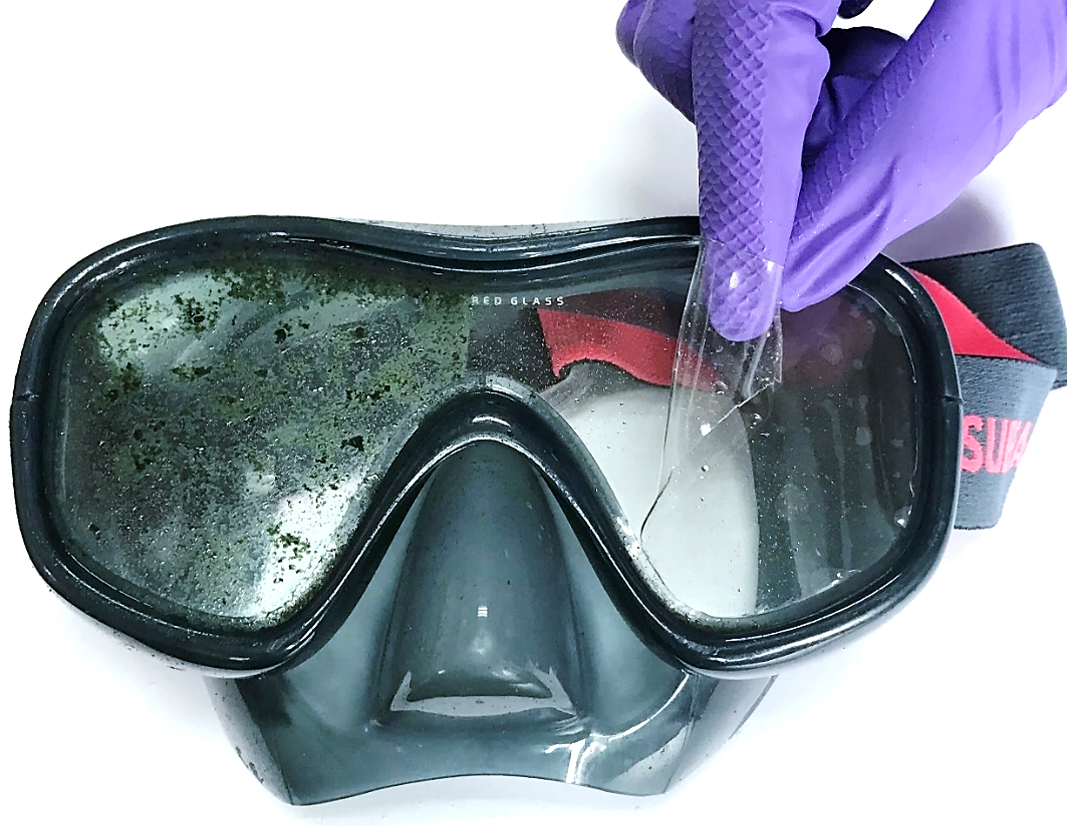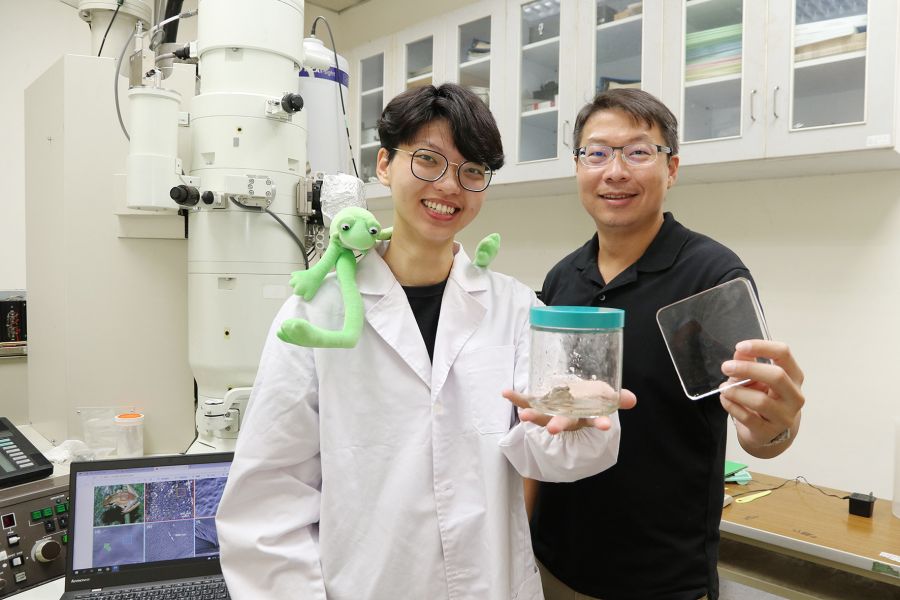


Inspired by Frog Skin, NCHU Developed Bioinspired Multifunctional Anti-Algae Coating and Was Published in Top International Journal
The soft and slippery skin of frogs inspired the team of Associate Professor Han-Yu Hsueh from the Department of Materials Science and Engineering, National Chung Hsing University to research and develop a multi-functional bioinspired coating that can resist the adhesion of aquatic organisms. This coating inspired by the frog skin is the first in the world and can be used in the future for multiple purposes such as anti-fouling on the surface of hulls, submarines and offshore oil tanks, anti-icing of aircraft, and self-cleaning of underwater optical equipment. The research results are published in the top journal "Advanced Functional Materials" in October and selected inside cover story.
Han-Yu Hsueh said that in addition to affecting the appearance of the equipment and causing damage to the surface structure, underwater fouling organisms can also cause huge economic and environmental impacts. This study imitated the soft, wrinkled and slippery characteristics of the amphibian frog skin, inspired by observing the epidermal patterns of various native endemic species of frogs in Taiwan. After the frog skin is magnified 30,000 times, it can be found that the surface of the mound-like protrusions is scattered with micron patterns of dots or grooves and others. These pores and grooves help store the secreted lubricating fluid. Therefore, the team concluded that the anti-algae and anti-fouling effects of frog skin come from the multi-scale microstructure on the surface that can store and retain the synovial fluid secreted by the frog skin.
The team used the original polymer synthesis technology to create nanopores on the micron-level wrinkled surface, and infused the surface with lubricating fluid, such as silicone oil, to form a slippery surface that mimicked the skin of a frog. The wrinkled curved surface is not conducive to the adhesion of algae because it is uneven, forming a structural anti-algae ability. Nanopores have strong capillary force and can absorb silicone oil to form a stable and long-lasting synovial surface, which can prevent the synovial fluid from being quickly lost due to the impact of shear forces such as ocean currents. This slippery surface can make biological fouling not easy to stick, and then make biological fouling desorb with the water flow, further strengthening the antifouling ability of the structured surface. At the same time, the tests in a dynamic environment and different algae species have proved that this kind of coating has the long-lasting ability of resistance to adhesion of biological fouling, and can cope with diverse algae in different environments, such as the algae in freshwater and seawater.
The first author of this paper, Ting-Lun Chen, PhD student, is the main executor who is ingenious from experimental design to sample preparation. We are especially grateful to Professor Li-Feng Chien of National Chung Hsing University and Professor Wei-Lung Wang of National Changhua University of Education for providing algae, and Professor I-Ju Yang of National Dong Hwa University for providing frog samples. The research is a successful cross-field collaboration of a purely local team.
Han-Yu Hsueh said that Taiwan is a subtropical island country with a humid climate and scattered freshwater ponds and lakes where algae are easy to grow. This study proposes effective anti-algae countermeasures, and is expected to help solve the local people’s livelihood and the social and environmental problems in Taiwan. In the future, we will try to reduce material costs and technical thresholds. Starting from polymer materials, we will integrate materials chemistry and interface science across fields, regulate the type and composition of nano-hybrid materials, and further promote to the industry to realize the possibility of commodification.
Original article in the journal: https://onlinelibrary.wiley.com/doi/10.1002/adfm.202104173?af=R

Figure. The surface morphology of the multifunctional bionic coating prepared by imitating the frog skin (upper right corner).

Figure. Comparison of the anti-algae tests by coating on the swimming goggles: The left half is uncoated. The right half is applied with a bionic anti-algae coating, showing an excellent anti-algae effect.
Figure. The first author of this article, PhD student Ting-Lun Chen (left), and Associate Professor Han-Yu Hsueh (right).
Repost Link: https://www2.nchu.edu.tw/en-news-detail/id/402







